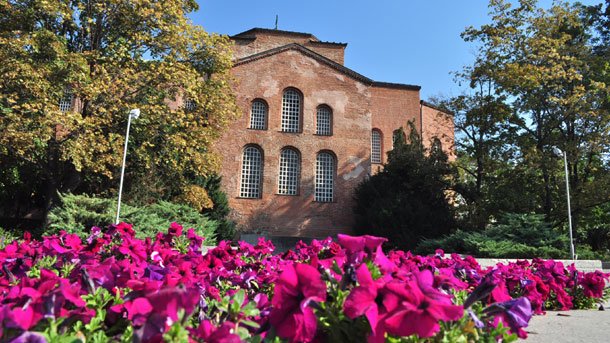
While moving briskly up the yellow cobblestones of Sofia one rarely thinks that just a few meters below the central boulevards and squares, there is another, unknown city, lost in darkness and obscurity. It is the ancient Serdica - one of the most important cities in the Roman Empire. Emperor Constantine the Great used to say "Serdica is my Rome" and even though of making it the capital of his vast dominions.

© Photo: Veneta Nikolova
The St. Sofia Basilica, which gave the name of today's capital, is one of Bulgaria’s iconic cultural and historical monuments. Established in the middle of the first century, the town experienced booming development during the reign of Constantine the Great in the fourth century. The great number of historical remains of residential and administrative buildings, of large squares and early Christian churches tell archaeologists about the turbulent history of the city. Some of them are exposed in the central part of Sofia In the basement of the "St. Sofia" archaeologists found the part eastern necropolis of ancient Serdica. The finds are preserved and separated in an underground museum, which this summer became one of the most famous tourist sites of the capital.

© Photo: Veneta Nikolova
The underground museum
The underground museum opened in the spring and it spreads at 600 square meters and has three levels depending on the dating of the excavated sites. The entrance is from the basilica itself. A glass staircase leads to this peculiar city of the dead, where silence reigns. Here eternity is lurking behind every wall and tomb. Visitors can see burial facilities dating back to the 3rd and the 5th century. Walking near the stone sarcophagi, tombs covered with stone slabs or those with semi-cylindrical vault we get a vague idea of funeral rites and beliefs of our ancestors.
Who were buried here?
“These were mostly rich people with the necessary economic, financial , political and religious power,” explains Yunian Meshekov archaeologist from the Museum of History in Sofia. – Not everyone could afford to be buried in such a tomb. Unlike the pagan era, when the deceased were placed together with burial gifts in tomb, such rituals were stopped. The deceased were buried mostly with some personal belongings. We have found traces of gold thread and personal items such as jewelry, rings, bracelets and even coins.”

© Photo: Veneta Nikolova

© Photo: Veneta Nikolova
The oldest is from the early fourth century. At that time, Christianity was the official religion in the Roman Empire - says Yunian Meshekov. The second church is a basilica, dating to the end of the fourth century. This temple, however, was destroyed by one of the barbarian invasions in this part of the Balkans. Perhaps, the temple was destroyed during the invasion of Huns in the middle of the 5th century. It is assumed that the current basilica of "St. Sofia," which gave the name of today's capital, was built at the end of the 5th and the beginning of the 6th century.
One of the most interesting findings near the church is a tomb with exquisite colorful murals and crosses. This is the only tomb in Bulgaria from the early Christian period, which stated the name of the deceased, said Yunian Meshekov. Archaeologists found an inscription in Latin, reading "Honorius , servant of God." He was probably a member of the high-level clergy of Serdica in the 5th century.

© Photo: Veneta Nikolova
The underground museum is yet to be expanded. Multimedia screens now show visitors short films about the history of the city. Mosaics are currently being restored and soon visitors would be walking on a century old floor, archaeologists said.
English version: Alexander Markov
For the Orthodox Church, the 29th of April marks the beginning of Holy Week - a profound period dedicated to the contemplation of the life of the Saviour and the preparation for the Holy Resurrection. Immediately after the great Christian feast of..
"Blessed is the King who comes in the name of the Lord! Peace in heaven and glory in the highest!" (Luke 19:38). With these enthusiastic exclamations, which the Church recalls on the feast of the Entry of the Lord into Jerusalem, Jesus Christ was..
The tangents between biology and ecclesiastical icon-painting are unknown and incomprehensible to those who are devoted to science. For Ekaterina Titova, a doctor of biological sciences accustomed to approaching everything through logic, religious..

+359 2 9336 661
